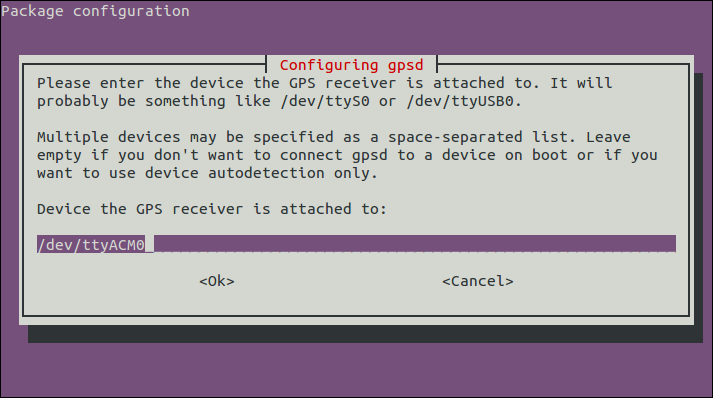Usage of USB GPS On Linux
- Install GPSD
sudo apt-get install gpsd gpsd-clients
- Install foxtrotgps (X11 for a Graphical View)
sudo apt-get install foxtrotgps
Configure gpsd
- Run:
sudo dpkg-reconfigure gpsd
- Configure as follows:
Set NO to start automatically.
Should gpsd handle attached USB GPS receivers automatically? Set YES here.
Set the USB Serial port of the GPS. Common is /dev/ttyACM0
GPSD Options.. Leave BLANK
GPSD Control socket. Leave it as it is.. /var/run/gpsd.sock
- Reboot the board now.
Using the GPS
Method 1: Console Graphical
- You can use
cgps -s
It will show a nice interface with all the relative GPS Data
- Or You can use
gpsmon
Method 2: Console Text (Python)
- Run:
sudo apt-get install python-gps
- testgps.py
import gps # Listen on port 2947 (gpsd) of localhost session = gps.gps("localhost", "2947") session.stream(gps.WATCH_ENABLE | gps.WATCH_NEWSTYLE) while True: try: report = session.next() # Wait for a 'TPV' report and display the current time # To see all report data, uncomment the line below # print report if report['class'] == 'TPV': print report.time except KeyError: pass except KeyboardInterrupt: quit() except StopIteration: session = None print "GPSD has terminated"
Method 3: X11 FoxtrotGPS
- Just open a terminal and run:
foxtrotgps
- or Menu → Accessories → FoxtrotGPS







